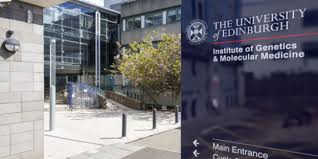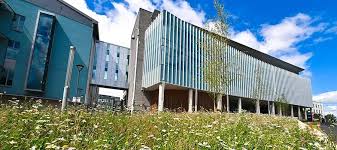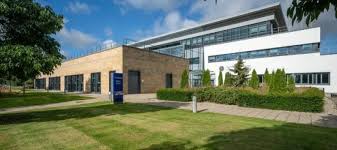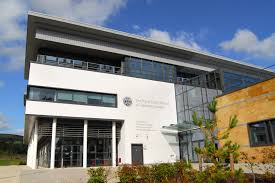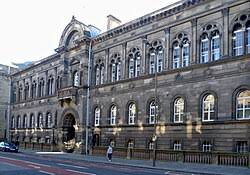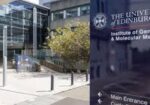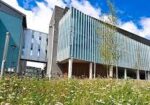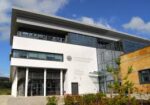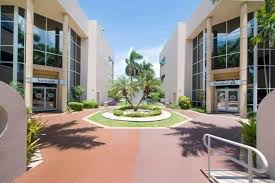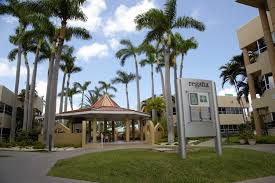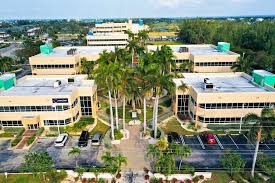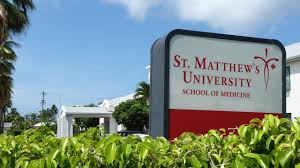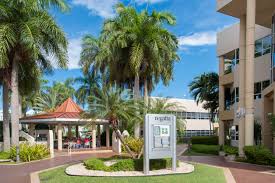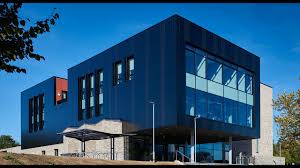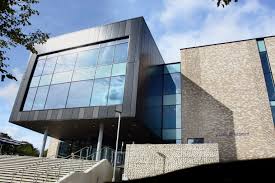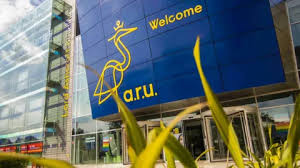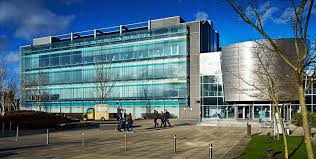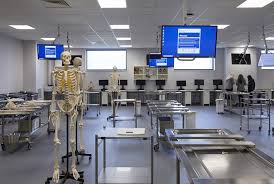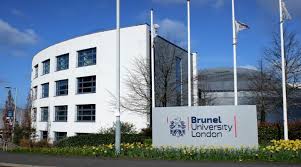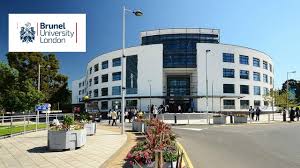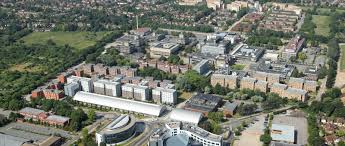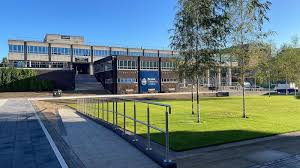Edinburgh Medical School, College of Medicine and Veterinary Medicine, University of Edinburgh Edinburgh Medical School – A Legacy of Excellence in Medical Education
The University of Edinburgh, founded in 1583 by the Town Council of Edinburgh, is the first civic university in Britain, founded to advance public learning and intellectual development.
About Edinburgh Medical School, College of Medicine and Veterinary Medicine, University of Edinburgh
The Edinburgh Medical School, which is within the University’s world-renowned College of Medicine and Veterinary Medicine, has its origins in the Edinburgh barber-surgeons of the early 16th century. But it wasn’t until 1726 that the University formally recognized a Faculty of Medicine, which saw the start of a revolution in medical teaching.
Edinburgh Medical School, College of Medicine and Veterinary Medicine, University of Edinburgh – Table of Contents
- About
- Advantages
- Ranking
- Departments And Course Duration
- Facilities And Infrastructure
- Required Documents
- Eligibility Criteria
- Admission Process
- Benefits
- Privileges And Benefits for Indian Students
- FAQ’s
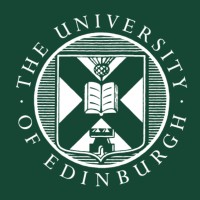
Foundations and Enlightenment: 16th to 18th Century
The Medical School drew inspiration from the successful educational models of Leiden University (Netherlands) and the University of Padua (Italy). Its establishment was a forward-thinking decision aimed at improving the health of the general public as well as the economic fortune of Edinburgh by attracting international students to Scotland—thereby lessening the necessity for young Scots to travel abroad to acquire expensive medical education on the European continent.
By the mid-18th century, the School’s reputation derived from its innovative combination of academic medicine and practical surgery within a university setting, augmented by a dedicated teaching hospital. The establishment of the Royal Infirmary of Edinburgh, initially in temporary facilities in 1729 and subsequently relocated to a purpose-built location in 1741, provided a basis for clinical education.
The creation of a botanic garden for the research of medicinal plants provided the basis for developments in Materia Medica (currently pharmacology) and chemistry. As student enrollment increased, in 1764 a 200-seat anatomy theatre was constructed, reflecting the school’s dedication to cutting-edge facilities.
The prestige of the school was further enhanced by such legendary scholars as William Cullen, James Gregory, and Joseph Black—the discoverer of carbon dioxide and latent heat. By this point, the university had started to attract students from all over the world, particularly Ireland and North America, with its graduates playing important roles in the establishment of medical schools in the United States and Canada.
19th Century Advancements
In the 19th century, Edinburgh Medical School further consolidated its international reputation. One of the main curricular reforms was the addition of the study of midwifery as a mandatory subject. Sir James Young Simpson’s pioneering work brought chloroform anesthesia to obstetrics and surgery in 1847, radically altering birthing and surgical practice.
Surgical innovation flourished in the hands of pioneers like Robert Liston, James Syme, and Joseph Lister, the latter responsible for initiating antiseptic and aseptic methods during the 1870s, which significantly decreased surgical infections. In a pioneering trend towards gender equality in medicine, Sophia Jex-Blake was grudgingly allowed into some classes in 1869, and women were officially given equal access to medical education at Edinburgh by 1889.
Infrastructure and Modernization
By the 1860s, the expansion of the medical school required new, modern facilities. The Royal Infirmary, which was then accommodated in antiquated buildings on Infirmary Street, and the huddled Medical Faculty in the University’s Old College, were no longer able to cope with the requirements of scientific advancement. To address this, a new Royal Infirmary was built at Lauriston Place in 1880, and then a purpose-built Medical School opposite the road was opened in 1884. These provided facilities for advanced scientific research and practical laboratory teaching—essential elements of contemporary medical education.
The Present Day: A World-Leading Institution
Currently, the University of Edinburgh remains committed to its time-honored heritage while excelling in innovative research and development. In the 2022 Research Excellence Framework (REF), the university ranks fourth in the UK by research power—both quality and breadth combined—and is Scotland’s highest-ranked institution (as reported by Times Higher Education).
The College of Medicine and Veterinary Medicine is the UK’s sole integrated college of its type, encouraging multidisciplinary collaboration in human and animal health fields. Research is grouped into multidisciplinary institutes strategically placed alongside top hospitals, enhancing translational research that is clinically relevant. Institutes are found in three major campuses, maximizing cross-sector collaboration and providing evidence-based medical innovation.
Advantages of Studying in Edinburgh Medical School, College of Medicine and Veterinary Medicine, University of Edinburgh
Global Rankings
The college ranks high among the top medical and veterinary schools globally as well as in the UK, a testament to its academic rigor and research contribution.
Exceptional Reputation
It is universally acknowledged for the excellence of its research, novel pedagogy, and superior performance of its alumni in the profession.
State-of-the-art Facilities
The students enjoy exposure to state-of-the-art, purpose-built facilities that include three on-campus veterinary hospitals, simulation centers, and new research labs.
Extensive Curriculum
The medical program is structured to provide students with the knowledge, competencies, and clinical experience necessary to address current global medical challenges.
Varied Veterinary Medicine Program
The vet program provides in-depth study areas in companion animals, farm animals, exotic animals, and wildlife, preparing students for comprehensive practical exposure.
High Employability of Graduates
The college has high graduate employment rates, with more than 93% of students finding employment or additional training shortly after graduation.
International Accreditation
The Veterinary Medicine degree is both international and UK-recognised and accredited by leading organisations like the Royal College of Veterinary Surgeons (RCVS) and the American Veterinary Medical Association (AVMA).
Student Support & Lifelong Learning
There is a robust support system in place, promoting personal growth, academic achievement, and lifelong learning to ensure that students excel both during and after graduation.
Strategic Location
Based in the historic, culturally rich city of Edinburgh, the school draws on being situated in one of Europe’s pre-eminent hotspots for medical and animal science research.
Intimate Academic Environment
The students become part of a close, collaborative, and inclusive academic environment in both the veterinary and medical schools, helping to promote feelings of belongingness and reciprocal growth.
Latest Notifications:
Edinburgh Medical School, College of Medicine and Veterinary Medicine, University of Edinburgh – Ranking
Edinburgh Medical School within the College of Medicine and Veterinary Medicine at the University of Edinburgh is one of the world’s oldest and most distinguished medical schools, having been established in a formal sense as early as 1726. It is one of two colleges within the school—the other being the world-renowned Royal (Dick) School of Veterinary Studies.
The medical school is among the biggest in the UK and is distributed among several campuses, such as the BioQuarter, Western General Hospital, the University central location, and the Royal Edinburgh Hospital. The school provides top-notch medical education with the aid of state-of-the-art facilities and a staff of experienced instructors and scholars who are leaders in the field of medical science.
Through a heavy focus on research-informed teaching, students are placed within an environment that promotes innovation, evidence-based practice, and academic inquiry, enabling them to be equipped with the skills to implement positive change within their careers.
Edinburgh Medical School is organized into three main deaneries: the Deanery of Clinical Sciences, based mainly at the BioQuarter; the Deanery of Biomedical Sciences, based around George Square; and the Deanery of Molecular, Genetic and Population Health Sciences. Each deanery incorporates interdisciplinary institutes and research centres, many of which have international reputations. The school also accommodates a number of philanthropically-funded centres dedicated to particular diseases, increasing the range and influence of medical research and training.
Teaching is assisted by two major teaching organisations. The Medical Teaching Organisation (MTO), at the Chancellor’s Building, has full administrative backup for the MBChB Medicine degree, from curriculum development through quality assurance to IT, communications, and general programme management on a day-to-day basis.
Medical Education within the MTO works closely with the NHS in order to have a rich and productive learning environment. The Biomedical Teaching Organisation (BMTO) is responsible for undergraduate and postgraduate learning in the Deanery of Biomedical Sciences, coordinating curriculum delivery and academic management.
The Edinburgh Clinical Research Facility (CRF), based at the Western General Hospital with further facilities throughout the city, provides state-of-the-art facilities for clinical and laboratory research to facilitate a wide variety of scientific studies and clinical trials.
Latest Updates:
Departments And Course Duration in Edinburgh Medical School, College of Medicine and Veterinary Medicine, University of Edinburgh
Departments
The MBChB program at Edinburgh Medical School is interdisciplinary and draws on the expertise and resources of the following three core deaneries:
-
Deanery of Clinical Sciences
-
-
- Based at the BioQuarter
- Focuses on clinical training and placements in real-world hospital and primary care settings
- Offers hands-on experience in specialties like internal medicine, surgery, psychiatry, pediatrics, obstetrics and gynecology
-
-
Deanery of Biomedical Sciences
-
-
- Located at the George Square campus in central Edinburgh
- Covers foundational sciences such as anatomy, physiology, pharmacology, pathology, and neuroscience
- Supports early-stage students with academic and lab-based education
-
-
Deanery of Molecular, Genetic and Population Health Sciences
-
- Integrates advanced topics like genetics, epidemiology, and public health
- Equips students with knowledge in population-based healthcare and modern diagnostic tools
Each deanery contributes to a layered, progressive curriculum that balances theory, lab work, simulation-based learning, and clinical rotations.
Course Duration of MBChB at Edinburgh
Preclinical Phase
- Foundation in medical sciences: anatomy, biochemistry, physiology, pathology, pharmacology
- Clinical relevance introduced early through case-based learning
- Weekly half-day clinical experiences from Year 1
- Emphasis on professional development and communication skills
Honours Year (Intercalated)
- Students undertake an intercalated BMedSci (Bachelor of Medical Sciences) degree
- Focus on research projects, scientific inquiry, and academic writing
- Offers flexibility to explore areas such as neuroscience, global health, or infectious diseases
Clinical Phase
- Full-time clinical rotations in hospitals and general practices across southeast Scotland
- Rotations include internal medicine, general surgery, psychiatry, pediatrics, GP, and emergency medicine
- Students apply knowledge in real-life settings and develop core competencies for professional practice
Facilities And Infrastructure in Edinburgh Medical School, College of Medicine and Veterinary Medicine, University of Edinburgh
The University of Edinburgh’s Edinburgh Medical School, part of the College of Medicine and Veterinary Medicine, offers world-class facilities and infrastructure to support medical education, research, and student life.
1. Academic & Research Facilities
-
Teaching Hospitals & Clinical Facilities:
- Affiliated with NHS Lothian, providing access to major hospitals like:
-
-
-
- Royal Infirmary of Edinburgh (one of the largest teaching hospitals in the UK)
- Western General Hospital (specializing in cancer and neurology)
- Royal Hospital for Children and Young People (pediatrics)
- Queen’s Medical Research Institute (QMRI) (cardiovascular and reproductive health research)
- Hands-on clinical training from early years.
-
-
-
Medical Libraries & Study Spaces:
-
-
- Main Library (George Square): Extensive medical textbooks, journals, and online resources.
- Western General Hospital Library & Royal Infirmary Library: Specialized medical collections.
- 24/7 access to study spaces and digital resources.
-
-
Labs & Simulation Centers:
-
- Chancellor’s Building (Little France Campus): Modern anatomy labs, clinical skills labs, and simulation suites.
- Virtual Reality (VR) & High-Fidelity Simulation: Used for surgical training and emergency scenarios.
- Biomedical Research Labs: Cutting-edge facilities for genetics, neuroscience, and infectious diseases.
2. Student Accommodation & Hostels
- University-Managed Accommodation: Options include:
- Holyrood (popular for medics, near Royal Infirmary)
- Pollock Halls (catered, social atmosphere)
- Self-catered flats (Sciennes, Warrender, etc.)
- Private Rentals: Many students live in Marchmont, Newington, or Bruntsfield (close to central campus).
3. Campus & Technology
- Central Area (George Square): Main university hub with lecture theatres, libraries, and student services.
- Little France Campus (BioQuarter): Home to the Medical School, Edinburgh Royal Infirmary, and research institutes.
- Digital Resources: Online learning platforms (LEARN), virtual dissection tools (Anatomage), and AI-assisted learning.
4. Student Life & Extracurriculars
-
Medical Societies:
-
-
- Edinburgh University Medical Society (EUMS) – Organizes lectures, debates, and socials.
- Surgical Society, GP Society, and Global Health Society for career-focused activities.
-
-
Sports & Fitness:
-
-
- Pleasance Sports Complex & Gym (one of the largest in Scotland).
- Medics’ sports teams (football, rugby, hockey) competing in inter-university matches.
-
-
Volunteering & Global Health:
-
- Opportunities with Edinburgh Global Health Society, StreetMed, and international electives.
5. Dining & Social Spaces
-
University Canteens & Cafés:
-
-
- Main Library Café, Potterrow, and Holyrood Dining Hall (budget-friendly meals).
-
-
Student Unions:
-
- Teviot Row House (oldest student union in the world) – Pubs, study spaces, and events.
- Potterrow (modern social hub with nightclub).
6. Sports & Wellbeing
-
Indoor & Outdoor Facilities:
-
-
- Peffermill Playing Fields (rugby, football, athletics).
- Climbing wall, swimming pool, and martial arts classes.
-
-
Student Support Services:
-
- Mental health counseling, disability services, and peer mentoring.
7. Unique Features
- History & Prestige: One of the oldest medical schools in the UK (founded 1726).
- Interdisciplinary Research: Strong links with Roslin Institute (famous for Dolly the Sheep) and Centre for Brain Research.
- Global Opportunities: Exchange programs, electives abroad, and partnerships with leading institutions.
Official site For Edinburgh Medical School, College of Medicine and Veterinary Medicine, University of Edinburgh: Click Here
Required Documents For Admission in Edinburgh Medical School, College of Medicine and Veterinary Medicine, University of Edinburgh
- Original birth Certificate
- Copy of a valid passport
- NEET Scorecard
- CV (if required)
- Statement of Purpose
- Reference letter(s)
- Certificate of English proficiency test – IELTS/TOEFL/C1 Advanced
- Financial Documents as Proof of financial ability
- Academic transcription or proof of your previous academic
- Transfer certificate
- Photocopy of IELTS/UKCAT/BMAT scores
- A personal statement that illustrates why you’re coming to the UK.
Eligibility Criteria For Edinburgh Medical School, College of Medicine and Veterinary Medicine, University of Edinburgh
- Pass 10+2 exam with PCB as main subject.
- Score at least 80-90% of marks in the 10+2 exam.
- Qualify NEET UG Exam.
- Clear UCAT & BMAT Medical Entrance Exam in the UK.
- Submit a certificate of IELTS or TOEFL.
- Migration certificate.
- Valid passport.
- Passports size photographs.
- Candidate VISA.
Admission Process For Edinburgh Medical School, College of Medicine and Veterinary Medicine, University of Edinburgh
- Online Application Submission
Begin by completing the official online application form through the University of Edinburgh’s admissions portal. - Submission of Printed Application and Documents
Once the application is filled, print and sign it. Submit the signed copy along with all required academic and supporting documents to the university. - Email Scanned Copies of Documents
Email scanned versions of all necessary documents to the admissions office. Use the subject line “Application for Admission” to ensure proper tracking. - Ensure Timely Submission
Make sure all application materials and documents are submitted before the official application deadline. - Application Review and Decision
The university will review your application and documents. Based on the evaluation, you will receive an offer letter or a notification of non-acceptance. - Initial Fee Payment
If accepted, you are required to pay the initial tuition deposit or fees to receive your official acknowledgment or confirmation letter. - Document Verification and Legalization
Ensure all academic documents are translated (if necessary), apostilled, and attested as per the requirements for international students. - Apply for a Student Visa
After acceptance and document processing, apply for a student visa. The university will issue a formal Invitation Letter to support your visa application.
Get More Details About The Colleges in UK: Click Here
Benefits of Studying at Edinburgh Medical School, College of Medicine and Veterinary Medicine, University of Edinburgh
- World-Class Reputation
Consistently ranked among the top medical schools globally, with a strong heritage dating back to 1726. - Cutting-Edge Facilities
Offers access to modern laboratories, simulation centres, and teaching hospitals like the Royal Infirmary of Edinburgh and the Western General Hospital. - Research-Driven Learning
Students are encouraged to engage in impactful research, supported by internationally renowned interdisciplinary research centres. - Comprehensive Curriculum
The MBChB program is designed to prepare students for the evolving demands of global healthcare, integrating clinical skills with biomedical sciences from year one. - Specialized Deaneries
The school is structured into three expert deaneries:- Clinical Sciences
- Biomedical Sciences
- Molecular, Genetic and Population Health Sciences
- Highly Employable Graduates
Over 93% of graduates secure employment or further study soon after graduation, benefiting from the school’s strong reputation with employers. - International Recognition
Medical and Veterinary degrees are recognized by key global regulatory bodies, making graduates eligible to work worldwide. - Supportive Learning Environment
Strong academic and personal support systems are in place, including dedicated teaching organizations like the Medical Teaching Organisation (MTO) and Biomedical Teaching Organisation (BMTO). - Interdisciplinary Opportunities
Students benefit from collaboration across medicine, veterinary sciences, and public health disciplines, enriching their academic experience. - Location in a Dynamic City
Situated in Edinburgh, one of Europe’s most vibrant academic and cultural hubs, offering rich historical and professional opportunities. - Diverse Student Community
Be part of an inclusive and global student body, encouraging cross-cultural collaboration and a broader worldview. - Strong NHS Ties
Close integration with NHS Lothian provides students with real-world experience and exposure to a wide variety of clinical settings.
Privileges And Benefits for Indian Students in Edinburgh Medical School, College of Medicine and Veterinary Medicine, University of Edinburgh
- Globally Recognized Degree
The MBChB degree is internationally recognized, including by the Medical Council of India (MCI)/NMC, enabling Indian graduates to return and practice in India after clearing the qualifying exams. - Post-Study Work Opportunities
Under the UK’s Graduate Route Visa, Indian students can stay in the UK for up to two years after graduation to work or seek employment. - Cultural Diversity & Indian Student Community
Edinburgh hosts a vibrant Indian community and several student associations that celebrate Indian festivals, cuisine, and cultural events, offering a sense of home away from home. - Scholarships & Financial Aid
Indian students are eligible for various University of Edinburgh international scholarships, such as the Edinburgh Global Undergraduate Scholarship, easing the financial burden. - Access to NHS Clinical Training
Students get hands-on clinical experience with NHS Scotland, one of the world’s leading public healthcare systems, enhancing both learning and employability. - Supportive Learning Environment
The university offers dedicated international student support, academic advising, and personal wellbeing services tailored to international student needs. - Opportunities for Research & Innovation
Indian students interested in research can collaborate on groundbreaking medical research in genetics, public health, and clinical sciences. - Pathways to PG in the UK or Other Countries
Graduates from Edinburgh Medical School can pursue postgraduate medical education (residency/specialization) in the UK, USA, Canada, and other countries. - Safe & Student-Friendly City
Edinburgh is a safe, scenic, and student-centric city, ideal for Indian students adjusting to international life.
FAQ’s
What are the eligibility criteria for Indian students?
- Completion of Class 12 with Physics, Chemistry, and Biology
- High academic achievement (minimum 85% recommended)
- UCAT (University Clinical Aptitude Test) score
- IELTS or TOEFL to prove English proficiency
- A strong personal statement, reference letter, and relevant work experience are advantageous
Are interviews conducted as part of the selection process?
Yes, shortlisted candidates are invited for Multiple Mini Interviews (MMIs) or virtual interviews, assessing communication, ethical reasoning, and motivation.
Is on-campus accommodation available for Indian students?
Yes, the university offers guaranteed accommodation for first-year international students. Options include catered and self-catered halls close to the main medical campuses.
What support services are available for Indian/international students?
- International Student Advice Service
- Personal tutor system
- Language support
- Career counselling
- Mental health and wellbeing services
Is Edinburgh’s MBChB recognized in India?
- Clear NExT (replacing FMGE from 2024).
- Complete a 1-year internship in India.
How is the MBChB program structured?
- Pre-clinical (foundations in anatomy, physiology, etc.).
- Clinical rotations in NHS hospitals.
- Early patient contact from Year 1.
Also Check:
